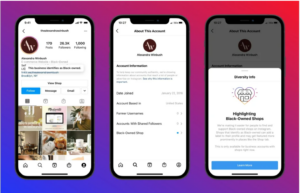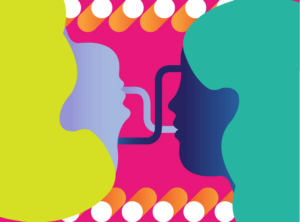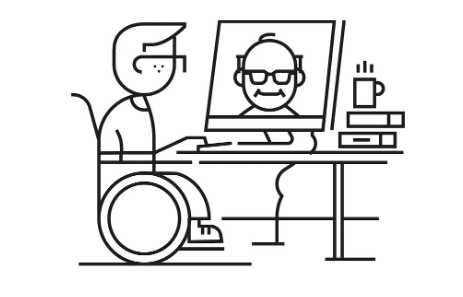Business+Tech and EVC co-sponsored the Close the Gap Initiative, held on Friday, February 17th, consisting of sessions, interactive workshops and speakers from different industries to share their journeys and share perspectives on pitch development. Rachel Brooks, Head of Product Equity at Instagram, led the session on designing for equity in big tech and discussed her journey to becoming an advocate for diversity at Instagram. She and her team are behind Instagram’s new tool that supports Black Businesses. Tech companies like Google, Meta and Adobe have been launching efforts to help close the equity gap in historically underrepresented communities passionate about venture capital, entrepreneurship and tech.
What is Product Equity?
Google defines Product Inclusion and Equity as the ongoing effort of building belonging through products, by centering the most marginalized voices at every phase of product creation. Product Equity considers all dimensions of identity like: Age, Culture, Disability, Education and Literacy, Ethnicity, Geographical and Global Relevance, Gender, Physical Attributes, Race, Religion, Sexual Orientation, Socioeconomic Status, and Technology Proficiency. Google has developed a guide to help companies evaluate where they stand in product inclusion and how to integrate inclusive product design for creating more equitable products.
In an interview with Mckinsey, Annie Jean-Baptiste, Head of Product Inclusion at Google, Product inclusion and equity started about six years ago, and while she was on an internal DEI team she noticed an opportunity to expand how we talked about diversity, equity, and inclusion as it relates to our products, to encompass the billions of users worldwide who have different races, genders, socioeconomic statuses, and speak different languages. Jean-Baptiste says Product inclusion and equity makes people feel seen. When they pick up a product or use a service or piece of technology, they feel like they were thought of when it was created. They feel like the different things that make them them and their unique home, business, and life circumstances, were part of the design and development process. Product Equity was designed to reach and amplify people’s lives and provide greater opportunity for all.
Where Product Equity is being done…
Last year, Instagram enabled businesses in the US to self-identify as Black-Owned on their profiles and product pages. This change allowed Black-Owned businesses to become more easy to discover, find and support. Instagram users will be able to see that label on the profiles and corresponding product pages, allowing users to explore curated collections and scroll through videos and content of Black-Owned businesses.

Instagram’s Randi Richardson reported to NBC News saying the goal of the “Black-owned” label is to provide another way for Black business owners to promote their businesses while also making it easier for consumers to find and support these companies.
In an interview with NBC News, Rachel Brooks, said, “there was a lot of tragedy happening in the Black community. On top of that, there was a global pandemic raging, and a lot of challenges particularly with Black-owned businesses being able to stay open, maintain livelihoods, those sorts of things. And so, what we saw is the community really rallied around Black-owned businesses somewhat naturally and organically by using #BuyBlack and all sorts of other ways of amplifying Black-owned businesses.”
According to Brooks, Instagram received support and push by Black-owned businesses to figure out what they could do to help the cause, which led to them implementing the “Black-owned” label.
“If exclusion is ignorance or avoidance of our differences—our struggles, our experiences, our knowledge, our needs, our abilities—then inclusion is our acknowledgement and acceptance of them. If exclusion separates, inclusion connects by removing barriers to understanding and access.”

About five years ago, the Adobe’s Product Equity team (formerly Inclusive Design team) was formed to build a core competency of inclusive practices across Adobe Design. This team helped think about and explore ways to address accessibility in design and dig deeper into how principles of diversity, representation, inclusion, and usability apply to Adobe’s products, and how we could build products in ways that included as many people as possible. Currently, the Product Equity team is dedicated to building equitable communities of practices across Adobe Product teams. The team was established to better reflect their focus to make product decisions that consider the full spectrum of gender, race, age, ethnicity, ability, culture, and all other human differences.
Microsoft is also making important Product Equity efforts to its inclusive design methodologies. In 2015, they launched the Inclusive Design Toolkit to “define principles and activities for its products and services that will enable and draw on the full range of human diversity”. The toolkit was designed to be an open guide for building products that help people realize their full potential, regardless of physical or disability. The toolkit is based on three principles: recognize exclusion; learn from diversity; and solve for one, extend to many. Recently, Microsoft has worked with experts in cognition and the disability community to create the Inclusive Design for Cognition Exclusion Toolkit, a set of tools on how to design to reflect the incredible diversity of human cognition, with the objective of addressing cognitive exclusion and co-creating with cognitive diversity in mind.

Additional Links to Check Out
Rachel Brooks Is One Of The Black Women Behind Instagram’s New Tool (hellobeautiful.com)
Instagram Updates Progress of Equity Team (adweek.com)
Frameworks measuring inclusion and product equity
Product design at Google: Building inclusion and equity into the process | McKinsey
Sources
McKinsey – Making product inclusion and equity a core part of tech
Guide to Product Inclusion and Equity — Google (about.google)
Diversity Inc- Black-Owned Business Label Debuts on Instagram
